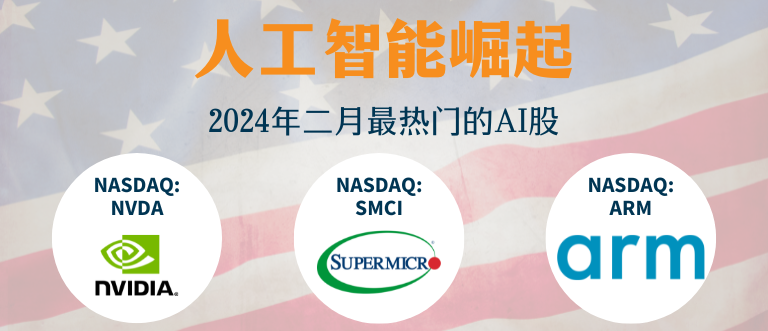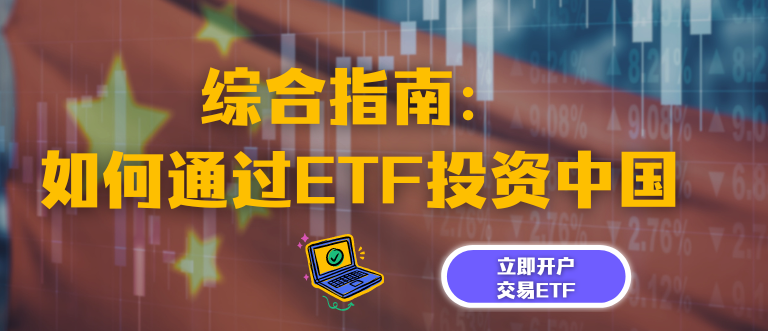Trading Volume
Table of Contents
Trading Volume
In the stock market, one metric that stands out as a vital indicator of market activity is Trading Volume. Investors keenly track this metric to gain insights into the dynamics of the market. Trading Volume offers valuable insights into market dynamics, liquidity, and investor sentiment. By understanding its implications, investors can make more informed decisions, navigate market fluctuations, and adapt their strategies to the ever-changing landscape of the stock market.
What is Trading Volume?
The total number of shares of a security that are purchased and sold over a given period is referred to as trading volume, typically within a trading day. It is a crucial metric that quantifies the level of market activity and the intensity of buying and selling within a given timeframe.
The trading volume reflects the total quantity of shares that change hands during a specific timeframe, whether it be a day, week, or month. This metric goes beyond the stock price alone, providing insights into the level of market activity and the intensity of buying or selling pressure.
Monitoring trading volume is essential for several reasons. Firstly, it serves as an indicator of market liquidity. Greater liquidity is typically indicated by a higher trade volume, which indicates a larger pool of buyers and sellers. To guarantee that investors can effortlessly enter or exit positions without materially affecting the stock’s price, liquidity is essential.
Understanding Trading Volume
Understanding Trading Volume involves recognising it as a key measure of market liquidity and participant interest. High trading volumes indicate active market participation, while low volumes suggest a quieter or less liquid market. It is not just the absolute number of shares traded that matters but also the relative change in volume compared to historical averages.
Moreover, trading volume is closely linked to price trends. Unusual spikes in volume can signal a potential shift in market sentiment. For example, a sudden surge in trading volume accompanying a price increase may suggest strong bullish sentiment, while a decrease in volume during a downtrend might indicate weakening bearish momentum.
Investors also use trading volume to confirm the validity of price movements. If a stock experiences a notable price change accompanied by high trading volume, it is considered more significant and likely to be a result of substantial market participation. Conversely, price changes with low volume might be less sustainable and could be attributed to fewer market participants.
Importance of Trading Volume
Market Liquidity: Trading Volume is a primary determinant of market liquidity. Higher volumes generally signify increased liquidity, facilitating the purchase and sale of securities by investors without having a major effect on their value.
Price Confirmation: Volume often serves as a confirmation tool for price movements. A price change accompanied by high volume is considered more significant and likely to be sustained compared to a similar change with low volume.
Market Sentiment: Volume can reflect market sentiment. A surge in volume may indicate a strong consensus among investors, while low volume may suggest uncertainty or lack of conviction.
Confirmation of Breakouts: When a stock price breaks through a significant resistance or support level, the confirmation of such a breakout often comes with a surge in trading volume. This volume spike indicates increased market participation, adding credibility to the breakout and suggesting a potential trend change.
Risk Management Tool: Trading volume serves as a valuable tool for risk management. Unusually high volumes during adverse price movements may signal a potential trend reversal, prompting traders to implement risk mitigation strategies to protect their positions.
How Trading Volume is Calculated
Trading volume represents the total number of shares or contracts traded during a specified period, typically a trading day. The calculation is simple and consists of totalling the shares or contracts that are purchased and sold over the specified period. This information is readily available on most financial news platforms, stock market websites, and trading platforms.
For stocks, the trading volume is usually expressed on a per-share basis. For example, if 100,000 shares of a company’s stock are bought and 80,000 shares are sold during a trading day, the total trading volume for that day is 180,000 shares.
In the case of options and futures contracts, the trading volume is measured in terms of the number of contracts traded. Every contract is a uniform commitment to purchase or sell a certain amount of the underlying asset.
One important measure of investor interest and market liquidity is trading volume. High trading volumes often accompany significant price movements, indicating strong market participation. Conversely, low trading volumes may suggest a lack of interest or potential market indecision.
Examples of Trading Volume
Consider Company XYZ, a technology firm. On a particular trading day, Company XYZ experiences a significant surge in trading volume, with 5 million shares changing hands. This uptick in volume captures the attention of market participants and analysts, prompting a closer examination of the underlying factors driving this increased activity.
Several factors may contribute to a surge in trading volume, and they often signal noteworthy events or developments related to the company. In the case of Company XYZ, the spike in trading volume could be attributed to a major product announcement, a positive earnings report, or a strategic partnership that has piqued investor interest. Traders and investors keenly observe these events as they can influence the stock’s price and overall market sentiment.
The example of increased trading volume in Company XYZ illustrates how market participants interpret such occurrences. Increased volatility and the possibility of big price swings are frequently linked to high trading volume. In this scenario, the influx of buy and sell orders indicates increased investor interest and a more active market.
Monitoring and interpreting trading volume trends can empower investors with valuable insights, empowering individuals to negotiate the market’s complexities and make wise choices based on the dynamic interaction of supply and demand.
Frequently Asked Questions
The amount of market activity is indicated by the trading volume. High volume can signify strong investor interest or consensus, while low volume may suggest a lack of conviction or reduced market participation.
Volume in the stock market refers to the total number of shares traded within a specified time frame. It serves as a crucial indicator of market activity, reflecting the level of interest and participation in a particular stock.
Yes, trading volume can affect stock prices. Generally, price movements accompanied by high trading volume are considered more significant and likely to be sustained, while low volume may suggest less conviction in the price change.
A high trading volume indicates strong market interest and participation. It may suggest the presence of significant news, events, or investor sentiment that is driving increased buying and selling activity.
Low trading volume may indicate reduced market interest or participation. It could suggest a lack of conviction among investors, potentially leading to increased volatility or more significant price swings.
Related Terms
Most Popular Terms
Other Terms
- Options expiry
- Adjusted distributed income
- International securities exchanges
- Settlement currency
- Federal funds rate
- Synthetic ETF
- Physical ETF
- Notional amount
- Negative convexity
- Jumbo pools
- Inverse floater
- Forward Swap
- Underwriting risk
- Reinvestment risk
- Final Maturity Date
- Payment Date
- Secondary Market
- Margin Requirement
- Mark-to-market
- Pledged Asset
- Yield Pickup
- Subordinated Debt
- Trailing Stops
- Treasury Stock Method
- Stochastic Oscillator
- Bullet Bonds
- Basket Trade
- Contrarian Strategy
- Exchange Control
- Notional Value
- Relevant Cost
- Dow Theory
- Speculation
- Rand cost averaging
- Sustainable investment
- Stop-limit sell order
- Constant prepayment rate
- Covenants
- Companion tranche
- Synthetic replication
- Beneficiary
- Reverse stock splits
- Quiet period
- Prepayment risk
- Interpolation
- Homemade leverage
- Hyperdeflation
- Hope Credit
- Prime bank investments
- Purchasing power
Know More about
Tools/Educational Resources
Markets Offered by POEMS
Read the Latest Market Journal

本文旨在为中级外汇交易者提供必要的信息和知识。它将涵盖我们上一篇文章 “五分钟看懂世界上最活跃的市场-外汇差价合约(FX CFD)...

解锁台湾股市的投资潜力!深入了解由强大的技术驱动型经济推动的股票市场,2023 年机械和电气设备将占出口的 69%。在政治稳定、投资者友好的法规和健全的法律框架下,探索台积电和富士康等全球顶级企业。台湾股市值得称赞的历史表现和在国际贸易中的的重要性使其更具吸引力。在这个科技实力雄厚、经济稳定、充满活力的股票市场中,抓住增长机遇!

了解外汇市场 外汇交易市场又称外汇市场,是一个买卖货币的全球性金融市场。它是全世界规模最大、流动性最强的金融市场,每日交易量超过 6 万亿美元。但外汇市场有一个重要却常被忽视的一点,就是它受交易心理的影响。在本文中,我们将探讨外汇市场的复杂性,还有把重点放在交易心理与传统交易策略共同发挥的关键作用...

五分钟看懂世界上最活跃的市场 -外汇差价合约(FX CFD)
外汇交易市场俗称外汇或外汇市场,是全球金融市场的支柱。它是世界上最活跃的市场,2022 年 4 月,全球交易额达到创纪录的每天 7.5 万亿美元[1] 。这个活跃的市场为交易者提供了利用货币价格波动赚取利润的机会。在本文中,我们将解释外汇市场的基本原理,助您了解其投资机制。 什么是外汇? 外汇市场是一个分散的全球市场,世界上所有货币都在这里进行交易...

随着通胀数据趋向 2% 的理想目标,人们普遍乐观地认为,在任何可能的降息之前,市场都不会受到不利影响。以下是美股市场2024年的一些重要事件,投资者在做出投资决策时可以参考留意。

根据《东南亚态势报告:2023》,失业和经济衰退是当前东南亚面临的主要挑战。各国采取了各种政策和措施以恢复经济,尽力摆脱新冠疫情的影响。尽管如此,越南在经济和社会方面展现出了令人满意的复苏迹象,经济增长逐季上升,成为世界经济的亮点之一。虽然全年GDP增速放缓至5.05%,低于政府6.5%的目标,但越南仍然是地区和世界经济增速较快的国家之一。






















